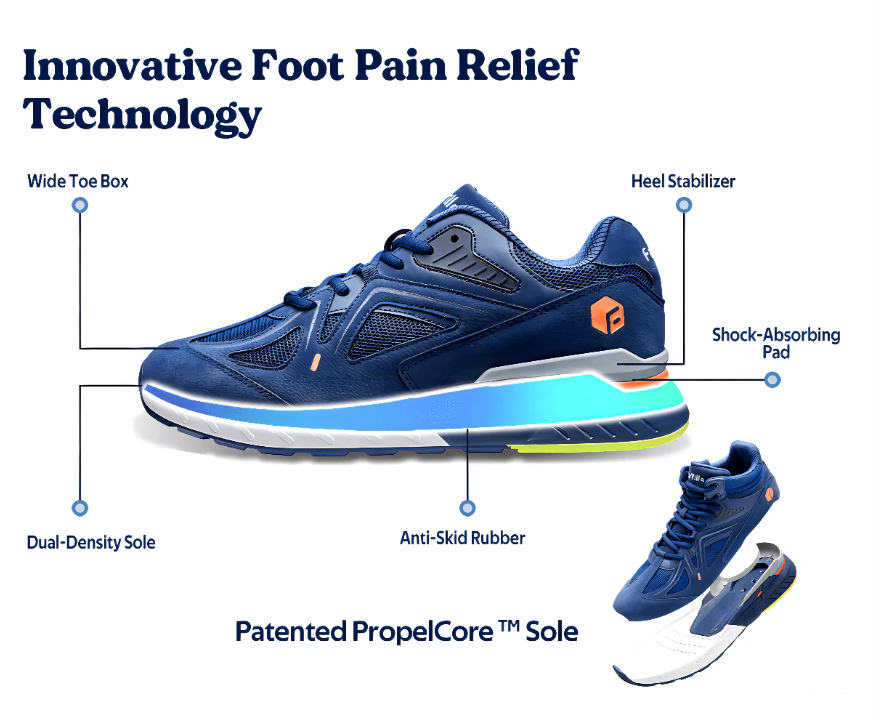When it comes to foot health, finding the right footwear is essential. For individuals with specific foot conditions such as plantar fasciitis, arthritis, or diabetes, wearing the wrong shoes can exacerbate discomfort and even lead to long-term issues. Orthopedic boots are designed to address these concerns, offering a blend of support, stability, and comfort to promote foot health. In this guide, we’ll explore the key benefits of orthopedic boots, the features to look for, and why they might be the perfect solution for you.
What Are Orthopedic Boots?
Orthopedic boots are specialized footwear designed to accommodate various foot conditions, provide enhanced support, and alleviate pain. Unlike regular shoes or boots, orthopedic boots prioritize functionality over aesthetics, although modern designs often combine both. These boots are ideal for people dealing with foot ailments, recovering from surgery, or requiring additional support for everyday activities.
Benefits of Orthopedic Boots
Orthopedic boots offer numerous advantages, making them an ideal choice for individuals with foot-related concerns. Here’s why they stand out:
1. Improved Foot Alignment
Orthopedic boots are engineered to promote better alignment of the feet, ankles, and knees. Misalignment often causes discomfort and can lead to joint issues over time. With features like structured arch support, deep heel cups, and stabilizing midsoles, these boots ensure that your body stays aligned as you walk, reducing the strain on your feet, legs, and lower back.
2. Alleviation of Foot Pain
Many people suffer from chronic foot pain due to conditions like plantar fasciitis, bunions, or heel spurs. Orthopedic boots are designed to relieve pressure on the affected areas by providing extra cushioning and tailored support. The high-quality insoles and midsoles often found in these boots absorb shock and distribute pressure evenly, reducing pain and promoting healing.
3. Support for Various Conditions
Orthopedic boots can address a variety of foot conditions. For those with diabetes, these boots help reduce the risk of foot ulcers by minimizing friction and providing extra protection to sensitive areas. For individuals with arthritis, the supportive soles and extra cushioning can ease joint pain and make walking more comfortable. Orthopedic boots are also commonly used by those recovering from foot or ankle surgery, offering the necessary support for a successful recovery.
4. Enhanced Stability
Orthopedic boots are built with stability in mind. Whether you’re walking on uneven surfaces, hiking, or navigating slippery conditions, the durable outsoles of orthopedic boots provide traction and reduce the risk of falls. Features like ankle support and wide toe boxes also contribute to a more secure and balanced walking experience, especially for those with mobility issues.
5. Customized Fit
Orthopedic boots often come in a variety of width options, including wide and extra wide, to accommodate different foot shapes. They also feature adjustable straps or laces that allow you to customize the fit, ensuring that your boots stay snug without feeling tight. This is particularly helpful for individuals with swollen feet or high arches, who may struggle to find comfortable, supportive footwear in standard sizing.
Key Features to Look for in Orthopedic Boots
When choosing orthopedic boots, there are several features to consider to ensure you get the maximum benefits:
1. Arch Support
A critical feature of orthopedic boots is superior arch support, which helps distribute weight evenly and reduces stress on the plantar fascia. Look for boots with contoured footbeds that cradle your arches for long-lasting comfort.
2. Cushioning and Shock Absorption
Since many foot conditions are exacerbated by the impact of walking, cushioning and shock absorption are essential. Boots with dual-density midsoles, memory foam insoles, or specialized cushioning technologies can help protect your feet from hard surfaces, making every step more comfortable.
3. Wide Toe Box
A wide toe box allows your toes to splay naturally and prevents issues like bunions, hammertoes, and overlapping toes. Orthopedic boots with a spacious front area reduce pressure on your toes and provide better balance and stability.
4. Adjustability
Look for boots with adjustable features such as Velcro straps, laces, or zippers. This makes it easier to customize the fit, particularly if you experience swelling throughout the day or have specific areas that need more room.
5. Durable and Slip-Resistant Outsole
A sturdy, slip-resistant outsole is crucial for safety and stability. Whether you’re walking on wet, icy, or uneven terrain, orthopedic boots with rubber or textured outsoles provide reliable traction to help prevent slips and falls.
Who Can Benefit from Orthopedic Boots?
Orthopedic boots are ideal for a wide range of individuals, especially those with:
- Plantar fasciitis
- Arthritis
- Diabetes
- Heel spurs
- Bunions
- Hammertoes
- Ankle instability
- Post-surgery recovery
Additionally, anyone who spends long hours on their feet, walks or hikes regularly, or experiences chronic foot pain can benefit from the support and cushioning that orthopedic boots offer.
Stylish and Functional: Modern Orthopedic Boots
One common misconception is that orthopedic footwear lacks style. However, many modern orthopedic boots blend fashion with function, allowing you to stay comfortable without sacrificing your look. From sleek leather designs to casual and sporty options, today’s orthopedic boots are available in a variety of styles to suit your personal preferences.
Conclusion: Investing in Your Foot Health
Orthopedic boots are more than just footwear—they’re an investment in your long-term foot health. With advanced features designed to provide maximum support, stability, and pain relief, these boots can help prevent further injury, improve mobility, and make walking more enjoyable. If you’re dealing with foot pain or looking for shoes that prioritize comfort and functionality, it’s time to consider orthopedic boots as part of your wardrobe. Your feet—and the rest of your body—will thank you.


